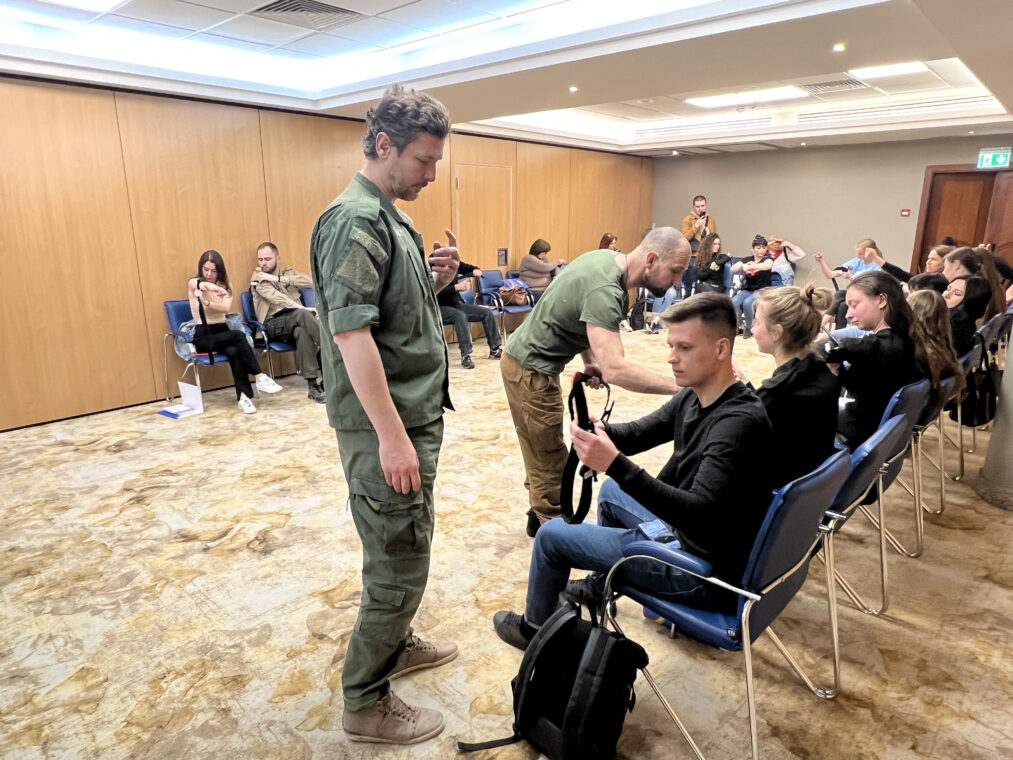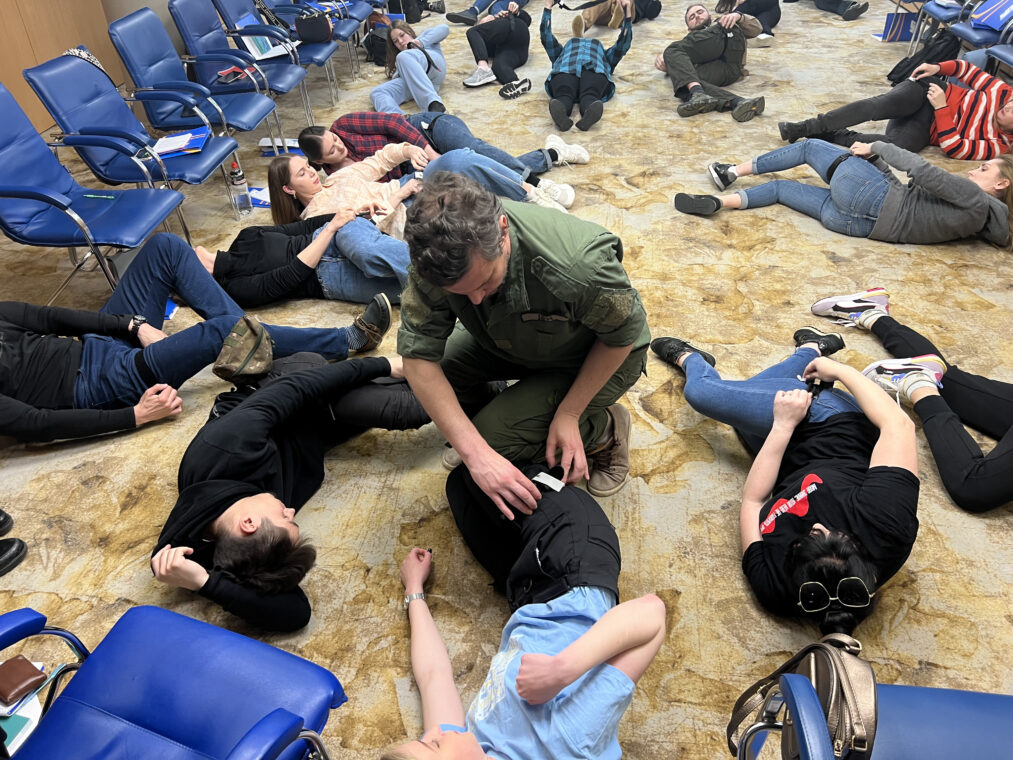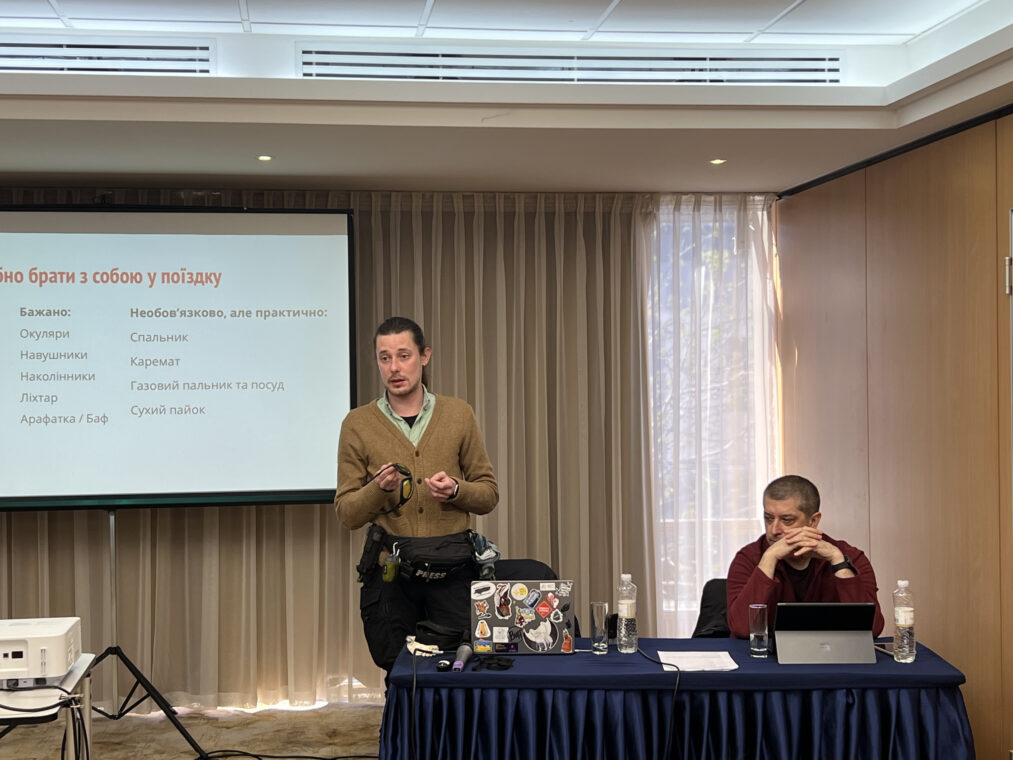
Permits, combat orders, accreditation, protective equipment - why are these norms so important for a journalist who is going to work in a conflict zone?
Compliance with all of these rules is not just a whim, it is necessary because they are written in blood.

At the Academy of Ukrainian Press, we have prepared a set of best practice guidelines for the frontline and during tactical rescue operations. On 28-29 April 2023, media professionals gathered at an offline event to attend the School of Military Journalism.

On the first day, the experts told the participants about the things to do when you are scared. Experts are convinced that first aid is not only the key to successful further treatment, but also often a factor in saving a person's life. There are situations when the simplest actions performed quickly and correctly can save lives. That is why it is important that everyone knows how to detect bleeding and apply a tourniquet to someone who needs it, and sometimes even to themselves, in the shortest possible time.

Here's a basic fact that everyone should know: there are 4 types of bleeding in medicine: arterial, venous, capillary, and mixed. However, this is only a diagnosis. You should not waste time on it when you are injured. Why? Because it will lead to determining the type of bleeding in a dead person! It is necessary to start surgical care immediately.
What do we pay attention to?
1/ The blood gushes out. But it does so only in the first few seconds.
2/ The stain on the clothes is growing rapidly
3/ A pool of blood under the wounded
4/ Traumatic amputation (if any)
All these signs are massive bleeding, which can quickly take the life of the wounded.
What should be done? Direct pressure on the wound and tourniquet. How to do it? Demonstrated during the School of Military Journalism. Classes on the theory and practice of first aid were held using certified equipment, mannequins, and artificial blood.


On the second day of the event, the group worked with practicing journalists who cover the war in their materials.
"Journalists determine their own limits of risk. But they should and must be minimized. No one will appreciate your work if you can't write, show or talk about what you saw. Therefore, always be careful!" says Piotr Andrusieczko, correspondent for Gazeta Wyborcza and Outriders in Ukraine and Eastern Europe, Journalist of the Year 2014.
"People's desire to cover the war must be supported by appropriate knowledge and skills. How to avoid harming the subjects of the footage - injured civilians or soldiers - or how to save your own or someone else's life thanks to your knowledge of first aid are important components of a journalist's work in war.
That is why colleagues who are just starting to cover the invasion, or even those who already have some experience, need to share their knowledge and experience, learn new things or refresh what they already know. Because what is brought to automaticity can prevent great harm at a critical moment," said Stanislav Yurchenko, special projects producer, photographer, radio host, and editor-in-chief of the Graty media outlet.

The training was held as part of a joint project between the Academy of Ukrainian Press and Internews, an international organisation that implements the Media Program in Ukraine, funded by the United States Agency for International Development (USAID). This programme strengthens the Ukrainian media and increases access to quality information.